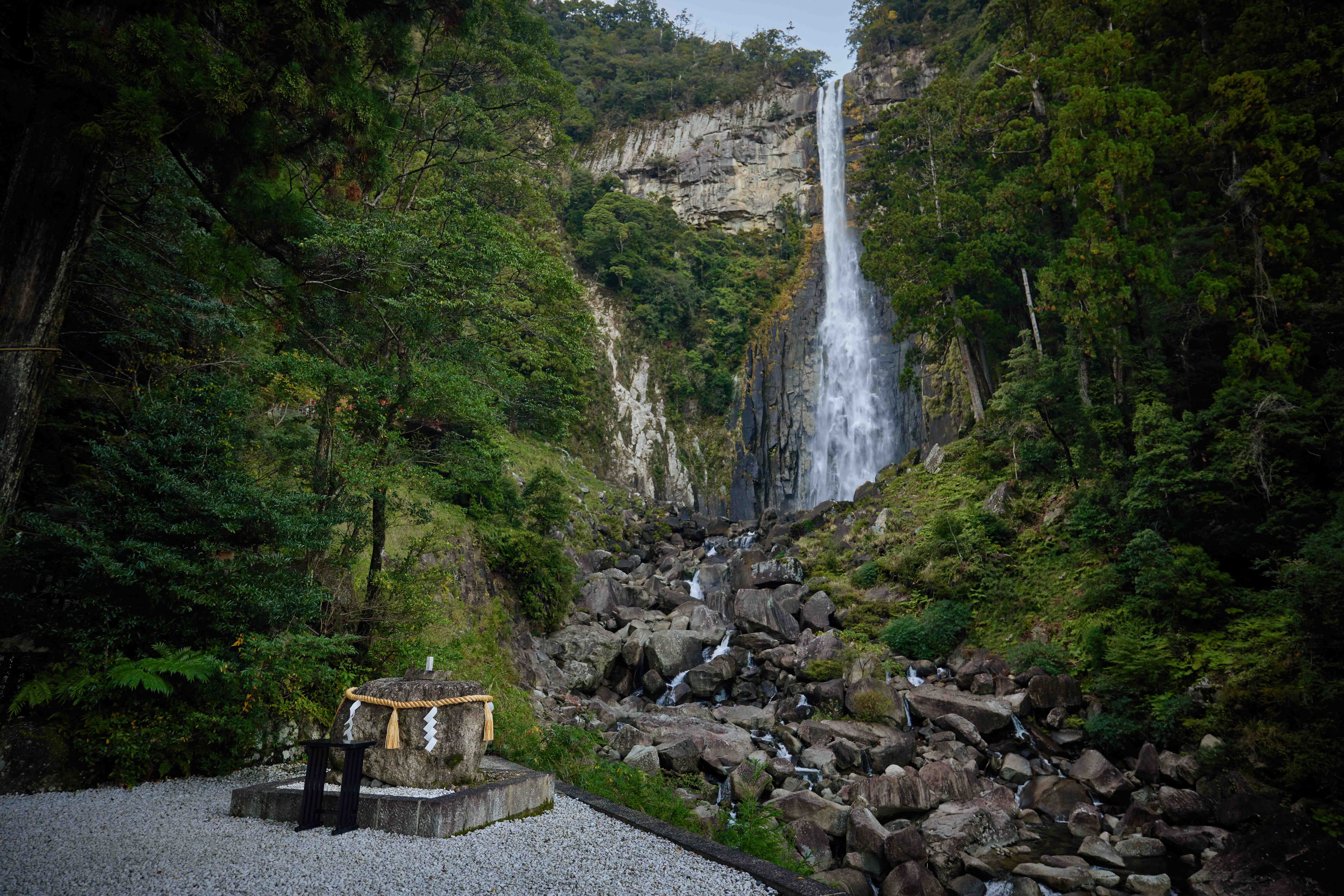Tucking into our tofu hotpot at the end of our first day’s hike, our host started to play music. His three-stringed instrument, the sanshin, resembles a banjo, except that its body is covered in snakeskin. People say it carries the voice of the deities, which seemed appropriate as we were on the Kumano Kodo, Japan’s ancient pilgrimage route.
Kohei Yuri explained to us that he and his wife had come to the Kii Peninsula to get away from the noise of urban Japanese life. Their minshuku, or family-run guesthouse, is one of a small number of overnight spots on a trail that is Japan’s equivalent of Spain’s Camino de Santiago, the legendary long-distance walking route.
Except in Spain you don’t get to nurse your tired feet in the hot springs of Kawayu Onsen, a geological thermal wonder located on the Ōta River. As we navigated the steam and slippery steps, we met two women from a city near Shanghai who say they come here as often as they can to escape the demands of work and the pressure to get married back home. There’s something about lying under the stars in the middle of winter to get conversations going with strangers.
For some time now, Japan has been a destination of choice for travellers from across the world, with several areas, not least large parts of Tokyo and Kyoto, groaning under the weight of overtourism. Ski resorts are reporting similar issues.

The Kumano Kodo, a sacred route for over 1,000 years, is an antidote to that. It is likely to remain so, not least because the amount of accommodation is deliberately kept limited. It is meticulously well organised, with efficient bus routes connecting the path to overnight stays and with brown wooden signs in Japanese and English making it almost impossible to get lost. Travellers are encouraged to avoid excessive noise, to be at one with the tranquillity and unspoilt nature.
The Nakahechi trail, which is the one most people take, starts after a short bus ride and leads you eastwards from the starting point of Takijiri. After a steep climb, you have to squeeze through a boulder in the middle of the path, known as “the womb”. You can dodge it with a short detour, but I was determined to ease my frame through the tiny gap in the path and…
Click Here to Read the Full Original Article at The Independent Travel…
